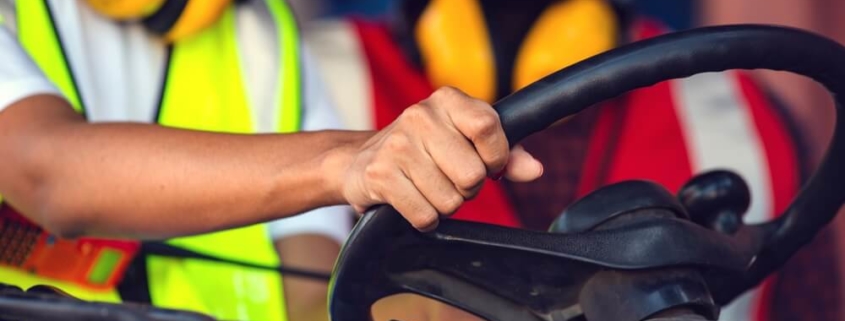OSHA Safety Guidelines for Dock Workers
Loading docks are one of the foundations of commerce in this country, supporting much of the freight network. When products come into this country or leave it via ship, laborers have to do the heavy work of inspecting and transferring items. This often involves working around heavy machinery, large trucks and ships, dangerous chemicals, and a lot of moving parts.
Dock work is clearly a hazardous activity. One wrong move or unsafe working conditions can lead to serious accidents and injuries. Even worse, dock workers can lose their lives in tragic accidents through no fault of their own.
Elevated Risks for Workers on Docks
According to OSHA, employees working on docks face a higher rate of injury than the average across all industries. Particularly in larger operations, where goods are constantly moving in and out, there might be temporary workers or visiting drivers who are unaware of the procedures or safety rules, creating an elevated hazard situation.
An area of serious concern is tractor-trailer coupling and uncoupling, where parking brakes may not be applied, or workers are exposed when they are around heavy machinery. Some of the most common loading dock hazards include:
- Vehicle Creep — Vehicles can move away from the loading bay, widening the gap between the dock platform and the loader.
- Drive-Away — A trailer or vehicle moves away from the loading bay too early, causing goods to fall, possibly on a worker.
- Load Roll-Away — People working on or near a vehicle can be injured by goods falling after an unsecured load rolls away or out of a vehicle.
- Trailer Tip — A trailer tips forward due to a heavy or unbalanced load after being uncoupled from a tractor.
- Water Ingress — Water entering a dock area can create a slip hazard for equipment and workers.
OSHA Safety Guidelines for Dock Workers
The Occupational Health and Safety Administration (OSHA) recognizes the seriousness of working around docks. Many of its general guidelines also apply to dock workers. OSHA has created some specific safety guidelines for this type of work. If you are a dock worker, here are some of the OSHA safety guidelines meant to reduce or eliminate workplace hazards.
Forklift Safety
It’s too simple to misjudge the distances from a forklift to the edge of a loading dock. Visual guides, such as yellow lines along the edge of the dock, can prevent forklifts from falling off of elevated surfaces.
OSHA also recommends placing protective barriers, such as bars or chains, on loading docks to prevent forklifts from tipping over the edge. OSHA also recommends that forklifts only be driven onto flatbed trailers when there is no distance or height gap.
Dock Barriers
If you are going to install barriers on your dock, OSHA recommends using bars over chains. Bars are stronger and less likely to be moved by workers or machinery than chains. According to OSHA standard 29 CFR 1910.28(b)(1)(i), barriers are required when there is a drop of four feet or more on a dock.
Dock Fall Protection
OSHA 1910.28 standards govern the use of fall protection measures on docks, such as safety nets, guardrail systems, and personal fall protection systems. If a worker could fall four or more feet from an exposed or open dock door or opening, these standards apply. For dock platforms under four feet, OSHA still recommends there be some type of visual barrier in order to create safeguards for workers.
Dock Trailer Safety
When workers are loading and unloading vehicles or trailers on a dock, there must be adequate ventilation to prevent excessive carbon monoxide exposure. If inhaled over prolonged periods, the poisonous gas can be fatal.
Dock Cleanliness
Workers in dock environments must be trained in keeping the areas clean and tidy. When things are out of place, or areas get cluttered, this can create serious safety hazards.
Dock Safety Training
Dockworkers should receive appropriate training on working with equipment on docks and various OSHA safety standards. Part of the training should include the provision and proper use of Personal Protective Equipment (PPE), such as hard hats, eye and face protection, foot protection, and hearing protection.
Have You Been Injured While Working on a Dock?
If you or a loved one has been injured while working on a dock, there’s a good chance OSHA’s safety guidelines were not being followed. These standards were developed to protect the health and safety of workers. Ignoring them can lead to serious accidents and even deaths.
Most U.S. employers, including those offering freight and dock work, are subject to OSHA’s standards. If you’d like to learn more about OSHA’s safety guidelines and your rights after an accident, OSHA Injury Attorney can help.

 OSHA Safety Guidelines for Dock Workers
OSHA Safety Guidelines for Dock Workers
 Electrical Safety on Construction Sites
Electrical Safety on Construction Sites
Leave a Reply
Want to join the discussion?Feel free to contribute!